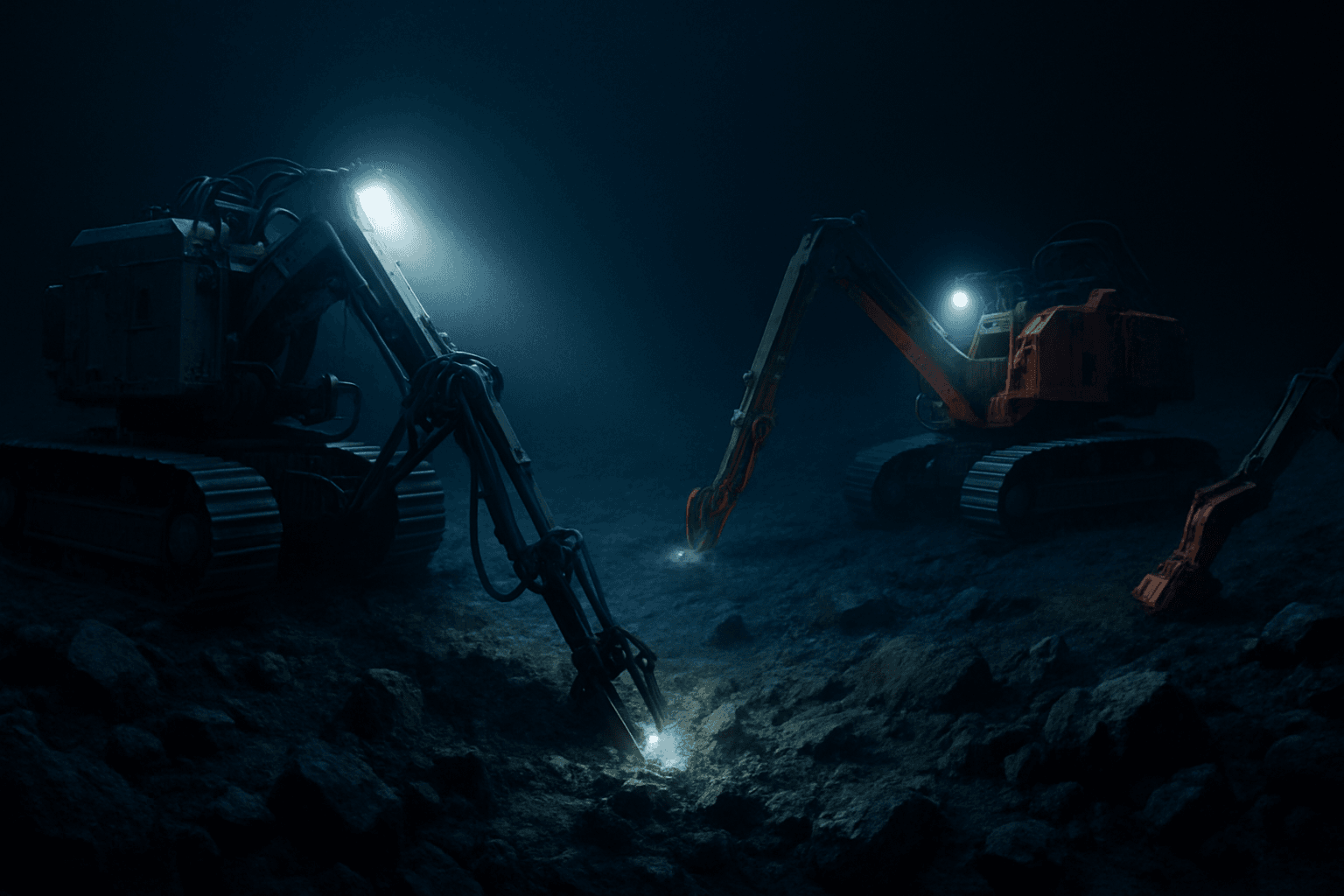In a move aimed at reducing the United States’ reliance on China for critical resources, the Trump administration has set its sights on the ocean floor. An executive order was signed to expedite the exploration and mining of valuable minerals found on the deep ocean seafloor, both within U.S. and international waters. This decision marks a significant shift in U.S. policy and intensifies the global debate surrounding seabed resource governance, ecological sustainability, and strategic competition, particularly between the U.S. and China.
The Stakes Beneath the Waves
- Critical Minerals: The focus is on extracting minerals like manganese, nickel, cobalt, and rare earth elements, which are essential for various industries, including defense, battery production, smartphones, and medical devices.
- China’s Dominance: China currently controls a significant portion of the critical mineral processing industry, making access to these resources a matter of national security and economic interest for the United States.
- Economic Potential: The White House estimates that deep-sea mining could generate billions of metric tons of materials, adding $300 billion and 100,000 jobs to the U.S. economy over the next decade.
Diving into the Details of the Executive Order
President Trump’s executive order directs the U.S. administration to take several key steps:
- Expedite Permits: Accelerate the review and issuance of seabed mineral exploration licenses and commercial recovery permits, both within the U.S. outer continental shelf and in areas beyond national jurisdiction.
- Deep Seabed Hard Mineral Resources Act of 1980: Invoke this act to justify the licensing of areas beyond national jurisdiction, arguing it serves as an interim measure until an international governing regime is established.
- Leadership in Deep-Sea Technology: Maintain U.S. leadership in deep-sea science and technology related to seabed mineral resources.
The Clarion-Clipperton Zone (CCZ): A Hotspot for Mining
Mining companies are particularly interested in the Clarion-Clipperton Zone (CCZ), a 1.7 million square mile area in the central Pacific Ocean. This region is estimated to contain more nickel, cobalt, and magnesium than all terrestrial sources combined. The minerals are found in potato-sized nodules lying on the ocean floor at depths of 4,000–5,500 meters (12,000–18,000 feet).
Legal and Geopolitical Challenges
- UN Convention on the Law of the Sea (UNCLOS): The U.S. has not ratified UNCLOS, which gives the International Seabed Authority (ISA) the mandate to regulate deep-sea mining in international waters. This puts the U.S. at odds with international norms and potentially in conflict with the ISA.
- International Seabed Authority (ISA): The ISA, a UN institution established by UNCLOS, governs deep-sea resources in international waters. It has been working on regulations for deep-sea mining, but the U.S. is not a voting member and cannot hold licenses.
- Legality of U.S. Actions: International regulators and legal experts are calling Trump’s move to unilaterally grant mining permits in international waters “brazenly illegal”. Lisa Rolls, ISA’s communications and global engagement head, stated that any commercial exploitation without the ISA’s authorization would violate international law.
Environmental Concerns
Environmental groups and scientists are raising serious concerns about the potential impacts of deep-sea mining:
- Biodiversity Loss: Industrial operations on the ocean floor could cause irreversible damage to marine ecosystems and biodiversity.
- Unexplored Ecosystems: The deep sea remains relatively unexplored, and mining activities could disrupt poorly understood ecosystems.
- Greenpeace’s Opposition: Greenpeace and other environmental organizations are calling for a ban on deep-sea mining, arguing that it would destroy the “common heritage of humankind” for the profit of a few corporations.
China’s Response and the Future of Deep-Sea Mining
China has responded swiftly and firmly to the U.S. initiative:
- Challenging Multilateral Frameworks: Beijing views the U.S. move as a direct challenge to the ISA and the UNCLOS framework.
- Heightened Tensions: Trump’s decision has the potential to heighten tensions between Washington and Beijing.
- Technological Advancement: China is expected to continue sharpening its technological edge and supporting multilateral governance in the deep-sea mining sector.
The future of deep-sea mining remains uncertain, with legal, environmental, and geopolitical challenges looming. The Trump administration’s push to unlock access to seabed minerals has set the stage for a complex and potentially contentious race for resources in the deep ocean. Whether this initiative will succeed in reducing U.S. dependence on China and establishing a sustainable deep-sea mining industry remains to be seen.

